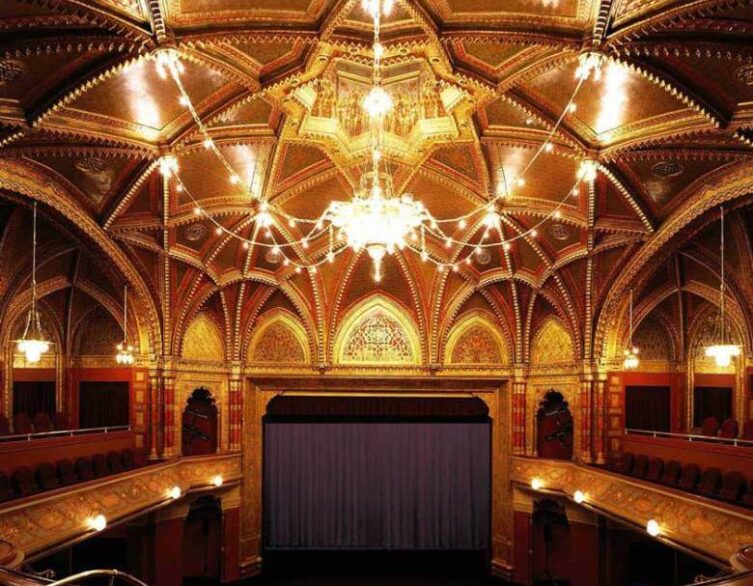The Uránia National Film Theater: 125 Years of Cultural Heritage

Historical Beginnings
The Uránia National Film Theater, one of Budapest’s most iconic cultural institutions, opened its doors on November 4, 1899. Originally named the Uránia Scientific Theater, the building stands as a testament to both architectural brilliance and cultural significance in Hungary’s capital.
Architectural Marvel
The building, designed by Henrik Schmahl in the mid-1890s, showcases a unique blend of Venetian Gothic, Italian Renaissance, and Moorish-Arabic architectural elements. Commissioned by Kálmán Rimanóczy, a construction entrepreneur from Nagyvárad, the structure was initially built as an entertainment venue or “orpheum.” Schmahl’s design created one of Budapest’s most distinctive Moorish-style buildings, which continues to captivate visitors with its ornate details and grand presence on Rákóczi Road.
Evolution Through the Ages
The building’s journey began as Oroszi Caprice, an entertainment venue operating between October 1896 and May 1898. After a brief transition period, it became the Uránia Scientific Theater in autumn 1899. The venue gained prominence for hosting educational presentations combined with visual aids, including early film screenings.
Pioneer in Hungarian Cinema
A significant milestone in Hungarian film history occurred at the Uránia in 1901 with the screening of “A táncz” (The Dance), considered the first Hungarian motion picture. Though no copies of this historic film survive, it featured prominent performers of the era, including Lujza Blaha and Sári Fedák, showcasing various dance styles from antiquity to the contemporary period.
Best deals of Budapest
Transformation and Modern Era
By 1916, the Uránia had transformed into a dedicated cinema, though it maintained some scientific lectures in afternoon slots. The 1930s saw the German UFA Film Company taking over operations, followed by Soviet management after World War II. A significant renovation in 2002 restored the building to its original splendor, adding two 60-seat chamber theaters beneath the main 425-seat auditorium.
Cultural Significance Today
The Uránia National Film Theater now serves as Hungary’s premier cinema institution, comparable in cultural significance to the National Theater and Opera House. It focuses on showcasing Hungarian and European films, both contemporary and classic, while hosting film festivals and prestigious premieres. The venue received the European Union’s Europa Nostra Award in 2006 for outstanding heritage preservation.
Modern Amenities
Today’s Uránia combines historical charm with modern technology, featuring digital HD projectors and an upgraded sound system. The theater also broadcasts productions from world-renowned institutions like the Metropolitan Opera and London’s National Theatre, bringing international arts to Budapest’s heart.
The Uránia National Film Theater stands not just as a movie theater but as a living monument to Hungary’s cultural heritage, continuing its mission of cultural enrichment and entertainment after 125 years of service.
Image source: Uránia National Film Theater
Related news
Related events


















